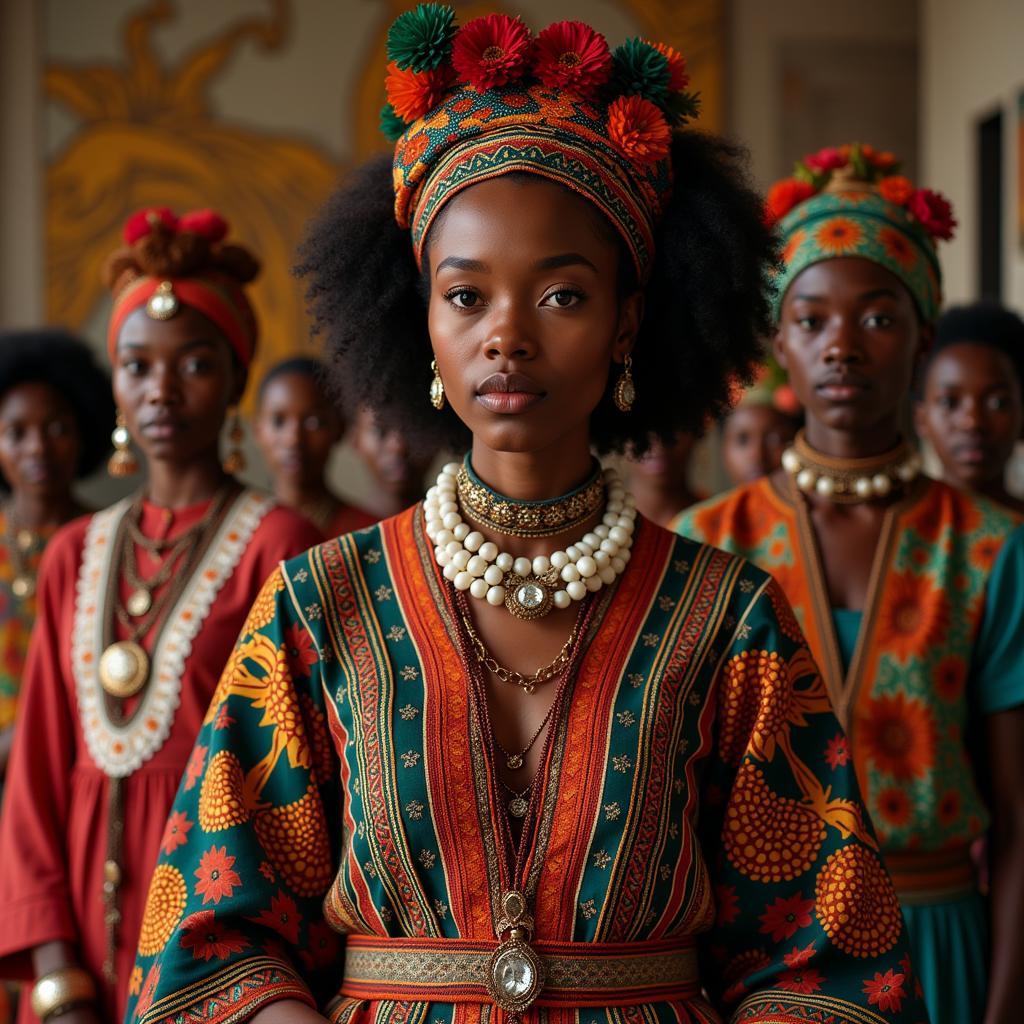Exploring the Rich World of African Art and Sculpture
African Art And Sculpture play a vital role in understanding the continent’s diverse cultures and histories. From ancient civilizations to contemporary artists, these expressive forms offer a captivating glimpse into African spirituality, social structures, and artistic innovation. They aren’t just static objects; they embody stories, beliefs, and traditions passed down through generations.
A Journey Through Time: Historical Significance of African Art and Sculpture
For centuries, African art and sculpture have served as powerful mediums of communication, reflecting the unique perspectives of various ethnic groups. These artistic traditions are deeply rooted in the social fabric of communities, often playing integral roles in rituals, ceremonies, and everyday life. Understanding this historical context provides a richer appreciation for the depth and complexity of these works.
African animal sculptures have a long history, spanning across the continent. The portrayal of animals often carries symbolic meaning related to power, spirituality, and the natural world. Carved wooden masks, for example, were not merely decorative; they served as conduits to the spiritual realm, used in rituals and performances to connect with ancestors and deities.
The diverse styles and techniques employed across the continent are a testament to the ingenuity and creativity of African artists. From the intricate bronze castings of Benin to the bold, geometric patterns of Ndebele art, each region has developed its distinctive artistic language.
Materials and Techniques: The Art of Transformation
African artists have always shown remarkable skill in transforming natural materials into breathtaking works of art. Wood, bronze, clay, ivory, and various other materials are expertly manipulated to create sculptures, masks, textiles, and other decorative objects. The choice of material often holds symbolic meaning, connecting the artwork to specific cultural beliefs or practices.
What is the Purpose of African Sculpture?
The purpose of African sculpture is multifaceted. While some pieces serve primarily aesthetic purposes, many hold deeper cultural and spiritual significance. Sculptures can represent deities, ancestors, or historical figures, acting as intermediaries between the physical and spiritual worlds. They can also be used in storytelling, education, and social commentary.
How is African Art Different from Western Art?
African art often prioritizes function and symbolism over purely aesthetic considerations, although aesthetic beauty is certainly valued. Western art has historically focused on realism and individual expression, whereas African art often emphasizes community and collective identity. This is not to say that there are no individual artists in Africa, but the communal aspect plays a more prominent role in the artistic process. Furthermore, African art and sculpture, traditionally, did not make a strong distinction between fine art, craft and design.
The Impact of Globalization on African Art and Sculpture
Globalization has brought both challenges and opportunities for African artists. While increased exposure to international markets has created new avenues for recognition and economic empowerment, it has also raised concerns about cultural appropriation and the commodification of traditional art forms. The balance between preserving cultural heritage and adapting to the demands of a globalized world is an ongoing dialogue within the African art community.
Where can I see examples of African Art and Sculpture?
Numerous museums and galleries worldwide house significant collections of African art and sculpture. Major institutions like the British Museum, the Metropolitan Museum of Art, and the Musée du quai Branly – Jacques Chirac offer visitors the chance to explore the richness and diversity of these artistic traditions.
Conclusion: A Continuing Legacy of Creativity
African art and sculpture represent a vibrant and evolving tradition, continuing to inspire artists and captivate audiences worldwide. From ancient rituals to contemporary expressions, these art forms offer a powerful lens through which to understand the rich cultural tapestry of the African continent. Exploring the world of African art and sculpture is a journey of discovery, uncovering the stories, beliefs, and artistic innovations that have shaped this dynamic and diverse region.
FAQ
- What are some common materials used in African sculpture?
Common materials include wood, bronze, clay, ivory, and stone. - What are some of the most famous examples of African art?
Famous examples include the Benin Bronzes, Nok terracotta figures, and Senufo masks. - How has African art influenced modern art?
African art has significantly influenced modern art movements such as Cubism and Expressionism. - Where can I buy authentic African art?
Reputable galleries, auction houses, and fair trade organizations are good sources for authentic African art. - How can I learn more about African art and sculpture?
Museums, books, academic journals, and online resources offer a wealth of information. - What is the significance of masks in African culture?
Masks often play a crucial role in rituals, ceremonies, and performances, representing spirits, ancestors, or deities. - How can I distinguish between authentic and fake African art?
Consulting with experts and researching provenance are essential for identifying authentic pieces.
Need More Information?
Explore these other related articles on our website:
- African Textiles and Their Cultural Significance
- The Role of Music in African Art and Rituals
- Contemporary African Artists Making an Impact
When you need assistance, please contact us via Phone: +255768904061, Email: kaka.mag@gmail.com or visit us at Mbarali DC Mawindi, Kangaga, Tanzania. We have a 24/7 customer service team.

